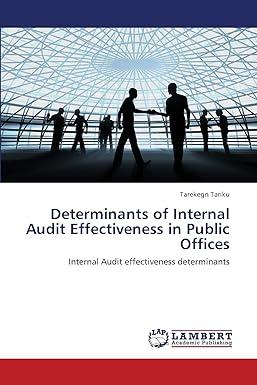Question
Owusu, Koomson and Bart-Plange (2019) have studied the role of procedural justice (PJ) in the relationship between power distance orientation (PDO)-independent variable and Tax compliance
Owusu, Koomson and Bart-Plange (2019) have studied the role of procedural justice (PJ) in the relationship between power distance orientation (PDO)-independent variable and Tax compliance behaviour (TCB)-dependent variable. In their article, the authors contend that".......those with a high-power distance orientation tend to behave submissively around managers, avoid disagreements, and believe that bypassing their bosses is insubordination (Hofstede, 2001). Such individuals obey leaders' instructions without question; believe that leaders deserve respect and deference, are superior, and are elite; and accept their own decision-making limitations while trusting that leaders provide more reliable decisions (Javidan et al., 2006), Therefore, those that are higher, rather than lower, in power distance orientation are likely to view a wider array of leader behaviours as fairer, perceiving more procedural justice (Kim & Leung, 2007: Leung & Lind,1986; Morris & Leung, 2000)...".....Regarding the link between procedural justice and TCB, the social exchange theory prediction is that individuals who perceive procedural justice will reciprocate by engaging in behaviours beneficial to society (Blau, 1964; Emerson, 1976). Specifically, individuals who perceive fair treatment are motivated to reciprocate by engaging in more extra-role behaviour..." The rationale for the expected relationship between power distance orientation and TCB is similar to that for the power distance orientation- procedural justice relationship. That is, since people who are higher in power distance orientation believe that their leaders are superior and elite, they will be highly motivated to behave in ways that benefit their leaders and society as a whole (Javidan et al., 2006)....."(p. 747, p.748).
- Explain the role of PJ in the relationship between PDO and TCB? (5 marks)
- Draw the conceptual framework and write the appropriate hypotheses.
(10marks)
- Identify the unit of analysis in this study and state two main objectives the study intends to achieve. (5 marks)
Step by Step Solution
There are 3 Steps involved in it
Step: 1

Get Instant Access to Expert-Tailored Solutions
See step-by-step solutions with expert insights and AI powered tools for academic success
Step: 2

Step: 3

Ace Your Homework with AI
Get the answers you need in no time with our AI-driven, step-by-step assistance
Get Started


